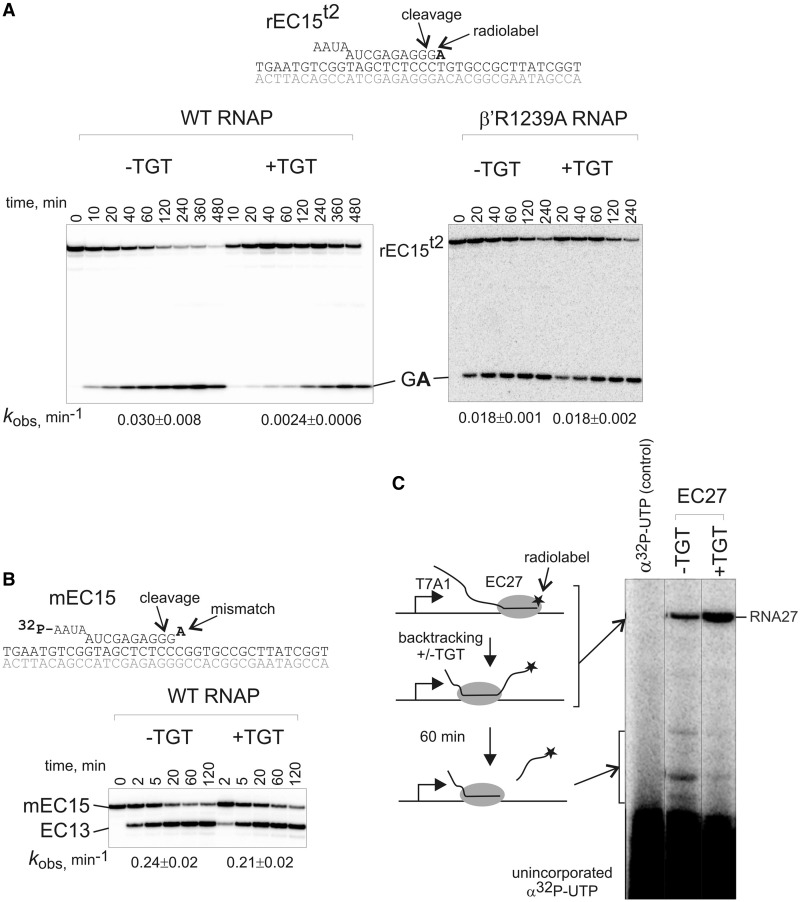Figure 3.
TGT inhibits backtracking by acting through the TL. (A) Kinetics of second phosphodiester bond hydrolysis in rEC15t2 by WT RNAP and mutant β′R1239A RNAP in the presence or absence of TGT. Rate constants are shown below the gels (numbers that follow the ± sign are standard errors). (B) Kinetics of second phosphodiester bond hydrolysis in mEC15 (scheme above gel; RNA was labeled at the 5′-end) by WT RNAP in the presence or absence of TGT. Note that the 3′-end NMP of the RNA (bold) is mismatched with the template strand, thus stabilizing complex in the backtracked state [which results in faster hydrolysis than in rEC15t2 in panel (A)]. Rate constants are shown below the gels (numbers that follow the ± sign are standard errors). (C) TGT inhibits deep backtracking. The scheme of the experiment is shown to the left of the gel. RNA in EC27, which was obtained by walking from T7A1 promoter, was labeled at the 3′-end (asterisk) at RT to prevent backtracking and then transferred to 40°C for 1 h in the presence or absence of TGT. Backtracking of EC27 was monitored by RNA hydrolysis (the major cleavage band corresponds to the 16 nt long cleavage product). Radioactive NTP was not removed from the reaction resulting in the smear at the bottom of the gel.

